Genre: Graphic Adventure Developer: Sasha Darko Publisher: Sasha Darko Players: 1 Released: 2025
Having played both Sacred Line games to completion, I’m a fan of what Sasha Darko accomplished on his own. He’s not a professional game developer and doesn’t work at a major studio with all the resources they provide, yet he managed to produce a pair of games that were both fun and different than your standard Genesis fare. Their production was a bit rough, to be sure, but there was a solid foundation that held promise for refinement and evolution. I didn’t think there would be a third game, so I was delightfully surprised to find out that he released the final installment in digital form just in time for Halloween. I recently played through it to completion, and while it does make some improvements over the previous chapters, there is still a lot that can be tweaked before the forthcoming physical release appears.
Sacred Line III concludes the story of sisters Ellen and Sarah as they attempt to live through a demonic attack in Yugoslavia amidst times of war, with action happening in two time periods: 1366 and 1999. To recap the story: Ellen and Sarah are detectives. In the first game, Sarah is kidnapped by a ancient doomsday cult known as “Holy Intentions,” which is involved from everything from human trafficking to starting wars around the globe. Ellen seeks out her sister, who is killed by the cult but is resurrected by The Mind, a creature opposed to Holy Intentions. The pair unite like two 16-bit Winchesters to combat the evil supernatural being known as The Betrayer and stop his plans of world domination. The third Sacred Line kicks off with the sisters adventuring through time, to periods which are full of evil secrets and revelations that involve world politics and that tie the series’ overall narrative together. Ellen somehow managed to survive the return of “The False Darkness,” an entity even more powerful than The Betrayer, even when all the cultists who revived it were killed by its power. She and her sister discover that a cosmic group known as The House wants all this nonsense ended since it disrupts the balance of the universe, so Ellen and Sarah now must defeat this evil and save the universe. That’s one hefty bit of lore!
Fear not! If you haven’t played the other two games, you won’t be lost here. Darko has included a story summary and encyclopedia at the start menu to enable newcomer players to easily catch up on events to this point. You can also start the game with the introduction to get the backstory on The False Darkness, or you can jump right in. I would recommend playing them, though. It will give you a much deeper appreciation for the story and how everything relates here, and you’ll benefit from a more comprehensive view of the narrative going into the final stretch of the story. The encyclopedia helps, but it obviously isn’t as in-depth as the playing through both games.
The idea of traveling to the past to save the future isn’t new, but I like how it’s incorporated here. The girls don’t go back willingly; they’re taken abruptly. It’s up to them to find out why and how to return to their own time. The evil is tied to the battle a warrior named Marlock had with The False Darkness at this time, but unfortunately, none of that is ever explored in-depth. The narrative doesn’t take much time to flesh out the sisters’ time here or how it’s tied to Marlock’s battle, and just when the story gets going, the game ends. Even taking your time to read every screen of text, and even if you have to replay certain choices, the digital version of Sacred Line III can be finished in about 20 minutes. It’s enough game for the price, but I would have liked a deeper story that further explains how all three games are connected. The ending is also a bit fuzzy, and I was left wanting more when it was all over.
The story is good but a bit lean, and the presentation also has peaks and valleys. Darko has tuned Sacred Line III combine rich 3D graphics optimized for CRT monitors with an all-real-instrument symphonic metal score. I don’t have a CRT anymore, so I can’t attest to how the game would look on one. I can say that it is dark on my OLED screen, really dark. Some screens are hard to make out, and while that could just be my settings, it feels like the game is just darker overall than the others. The music does set the atmosphere and sounds great, but I wish there were more fade-outs when tracks change, as they sometimes abruptly end.
Darko has also evolved the branching storyline to include an improved dice-based combat system, intricate puzzles, and multiple endings that encourage experimentation. There seemed to be fewer dice encounters this time around, and if you lose, you still have the option to try again from the last checkpoint. The same is true when you select the wrong direction to explore. If you die, you can always try again. I’m still not entirely convinced with the whole dice mechanic, either. In my reviews of the other installments, I mentioned that it relies too much on the honor system to be effective. I was hoping to see it more automated here, with more results. I still think that an onscreen rolling die would add to the aesthetic, though I admit that I don’t know how feasible that is. As it is, combat isn’t all that compelling because if you fail you can always restart from the last checkpoint an unlimited number of times. Perhaps if there were a limited amount of tries per play, multiple difficulty levels, or maybe if failing a roll led to a different branch in the story, kind of like a different way to further the game, it would add more tension (as well as extend play time). As it is, failing a roll doesn’t mean much, but with different outcomes, players wouldn’t know what to expect, and it would prompt further playthroughs to see all the different branches. It may seem like I’m asking for a lot, but we’re at the third release in this series, and I don’t feel that gameplay has advanced as much as it could have.
I know it sounds like I’m dunking on Sacred Line III, but I’m not! Darko confirmed to me that the game will be updated before its physical release based on feedback from the press and from players of the digital version, so I think there’s a good chance that we may see a much different final version. Any bugs and typos found in the digital release will be fixed, and new content, like a puzzle he added just before Sacred Line III’s debut may be implemented before finalizing the physical product. I encourage everyone to try the game, as it will run on most Sega consoles and emulators (I didn’t have any issues on my Mega SD/Mega SG setup). Regarding a cartridge release, Mega Cat Studios published the previous two games, but it’s unlikely that they’ll be involved this time around, and Darko has confirmed another publisher as of this writing.
I admit that while Sacred Line III wasn’t the evolution I hoped for, I did enjoy it quite a bit. It wasn’t as creepy as the first game, and it was much darker visually than the second, but it was still a fun, albeit short, ride. It’s worth the asking price and should definitely be played by those who finished the first two. You can buy it or try the demo at Darko’s website. There are several different versions, from the basic game to a Unique Pack ($25) that includes the soundtrack and adds your name to the game, as well as the Founder’s Pack ($40), which also adds the “A Distant Light” DLC. This additional content is a short, black-and-white game set in the same universe.
I’m only giving this score based on my playthrough of the basic digital version, and I’ll be happy to adjust it based on what the final physical version includes. I’m encouraged by Darko’s eagerness for feedback, and the fact that he’s done all this alone deserves recognition. If you want something creepy this Halloween, then Sacred Line is a brief but fun way to spend an evening with the lights off and headphones on.
SCORE: 7 out of 10

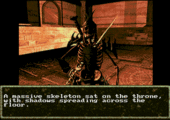


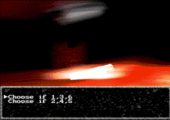
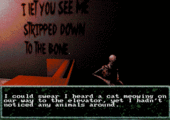
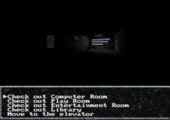
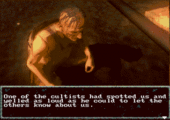
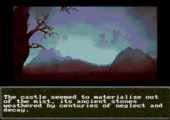
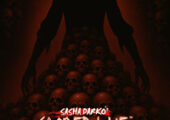
Recent Comments